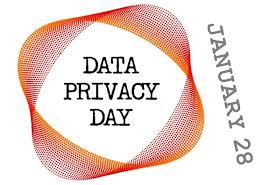Please visit our blog at its new home!
Last week, we discussed several issues that employers needed to be aware of before using background checks in their hiring process. This week, we will expand on that information. (This information was taken from a joint publication of the Equal Employment Opportunity Commission and the Federal Trade Commission.)
Using Background Information
 EEOC
EEOC
Any background information you receive from any source must not be used to discriminate in violation of federal law. This means that you should:
– Apply the same standards to everyone, regardless of their race, national origin, color, sex, religion, disability, genetic information (including family medical history), or age (40 or older). For example, if you don’t reject applicants of one ethnicity with certain financial histories or criminal records, you can’t reject applicants of other ethnicities because they have the same or similar financial histories or criminal records.
– Take special care when basing employment decisions on background problems that may be more common among people of a certain race, color, national origin, sex, or religion; among people who have a disability; or among people age 40 or older. For example, employers should not use a policy or practice that excludes people with certain criminal records if the policy or practice significantly disadvantages individuals of a particular race, national origin, or another protected characteristic, and does not accurately predict who will be a responsible, reliable, or safe employee. In legal terms, the policy or practice has a “disparate impact” and is not “job related and consistent with business necessity.”
– Be prepared to make exceptions for problems revealed during a background check that were caused by a disability. For example, if you are inclined not to hire a person because of a problem caused by a disability, you should allow the person to demonstrate his or her ability to do the job – despite the negative background information – unless doing so would cause significant financial or operational difficulty.
When taking an adverse action (for example, not hiring an applicant or firing an employee) based on background information obtained through a company in the business of compiling background information, the FCRA has additional requirements:
– Before you take an adverse employment action, you must give the applicant or employee:
a notice that includes a copy of the consumer report you relied on to make your decision; and
a copy of “A Summary of Your Rights Under the Fair Credit Reporting Act,” which you should have received from the company that sold you the report.
– By giving the person the notice in advance, the person has an opportunity to review the report and explain any negative information.
– After you take an adverse employment action, you must tell the applicant or employee (orally, in writing, or electronically):
that he or she was rejected because of information in the report;
the name, address, and phone number of the company that sold the report;
that the company selling the report didn’t make the hiring decision, and can’t give specific reasons for it; and
that he or she has a right to dispute the accuracy or completeness of the report, and to get an additional free report from the reporting company within 60 days.
Disposing of Background Information
EEOC
Any personnel or employment records you make or keep (including all application forms, regardless of whether the applicant was hired, and other records related to hiring) must be preserved for one year after the records were made, or after a personnel action was taken, whichever comes later. (The EEOC extends this requirement to two years for educational institutions and for state and local governments. The Department of Labor also extends this requirement to two years for federal contractors that have at least 150 employees and a government contract of at least $150,000.) If the applicant or employee files a charge of discrimination, you must maintain the records until the case is concluded.
FTC
Once you’ve satisfied all applicable recordkeeping requirements, you may dispose of any background reports you received. However, the law requires that you dispose of the reports – and any information gathered from them – securely. That can include burning, pulverizing, or shredding paper documents and disposing of electronic information so that it can’t be read or reconstructed. For more information, see “Disposing of Consumer Report Information? Rule Tells How”
~~Susan McCullah is the Marketing Project Manager/ Background Screening Division for Data Facts, Inc, a 25 year old Memphis based company. Data Facts Inc -an NAPBS accredited company- is a leading provider of employment screening solutions. Check out our website for a complete explanation of our services.
This information was taken from a joint publication of the Equal Employment Opportunity Commission and the Federal Trade Commission.
 When making personnel decisions — including hiring, retention, promotion, and reassignment — employers sometimes want to consider the backgrounds of applicants and employees. For example, some employers might try to find out about the person’s work history, education, criminal record, financial history, medical history, or use of social media. Except for certain restrictions related to medical and genetic information (see below), it’s not illegal for an employer to ask questions about an applicant’s or employee’s background, or to require a background check.
When making personnel decisions — including hiring, retention, promotion, and reassignment — employers sometimes want to consider the backgrounds of applicants and employees. For example, some employers might try to find out about the person’s work history, education, criminal record, financial history, medical history, or use of social media. Except for certain restrictions related to medical and genetic information (see below), it’s not illegal for an employer to ask questions about an applicant’s or employee’s background, or to require a background check.
However, any time you use an applicant’s or employee’s background information to make an employment decision, regardless of how you got the information, you must comply with federal laws that protect applicants and employees from discrimination. That includes discrimination based on race, color, national origin, sex, or religion; disability; genetic information (including family medical history); and age (40 or older). These laws are enforced by the Equal Employment Opportunity Commission (EEOC).
In addition, when you run background checks through a company in the business of compiling background information, you must comply with the Fair Credit Reporting Act (FCRA). The Federal Trade Commission (FTC) enforces the FCRA. This publication explains how to comply with both the federal nondiscrimination laws and the FCRA. It’s also a good idea to review the laws of your state and municipality regarding background reports or information because some states and municipalities regulate the use of that information for employment purposes.
Before You Get Background Information
EEOC
In all cases, make sure that you’re treating everyone equally. It’s illegal to check the background of applicants and employees when that decision is based on a person’s race, national origin, color, sex, religion, disability, genetic information (including family medical history), or age (40 or older). For example, asking only people of a certain race about their financial histories or criminal records is evidence of discrimination.
Except in rare circumstances, don’t try to get an applicant’s or employee’s genetic information, which includes family medical history. Even if you have that information, don’t use it to make an employment decision. (For more information about this law, see the EEOC’s publications explaining the Genetic Information Nondiscrimination Act, or GINA.) Don’t ask any medical questions before a conditional job offer has been made. If the person has already started the job, don’t ask medical questions unless you have objective evidence that he or she is unable to do the job or poses a safety risk because of a medical condition.
FTC
If you get background information (for example, a credit or criminal background report) from a company in the business of compiling background information, there are additional procedures the FCRA requires beforehand:
 Tell the applicant or employee you might use the information for decisions about his or her employment. This notice must be in writing and in a stand-alone format. The notice can’t be in an employment application. You can include some minor additional information in the notice (like a brief description of the nature of consumer reports), but only if it doesn’t confuse or detract from the notice.
Tell the applicant or employee you might use the information for decisions about his or her employment. This notice must be in writing and in a stand-alone format. The notice can’t be in an employment application. You can include some minor additional information in the notice (like a brief description of the nature of consumer reports), but only if it doesn’t confuse or detract from the notice.
If you are asking a company to provide an “investigative report” – a report based on personal interviews concerning a person’s character, general reputation, personal characteristics, and lifestyle – you must also tell the applicant or employee of his or her right to a description of the nature and scope of the investigation.
 Get the applicant’s or employee’s written permission to do the background check. This can be part of the document you use to notify the person that you will get the report.
Get the applicant’s or employee’s written permission to do the background check. This can be part of the document you use to notify the person that you will get the report.
If you want the authorization to allow you to get background reports throughout the person’s employment, make sure you say so clearly and conspicuously.
Certify to the company from which you are getting the report that you:
notified the applicant and got their permission to get a background report;
complied with all of the FCRA requirements;
and
don’t discriminate against the applicant or employee, or otherwise misuse the information in violation of federal or state equal opportunity laws or regulations.
Watch for the second part of this series next week!
~~Susan McCullah is the Marketing Project Manager/ Background Screening Division for Data Facts, Inc, a 25 year old Memphis based company. Data Facts Inc -an NAPBS accredited company- is a leading provider of employment screening solutions. Check out our website for a complete explanation of our services.
By Sharlyn Lauby
If you haven’t heard, Massachusetts Senator Elizabeth Warren has introduced a bill to prohibit the use of credit checks during the recruiting process. This is sure to be an interesting legislative debate and one worth watching. Not just to see if the bill gets passed but to examine the whole conversation about credit checks in the hiring process. It’s possible that any changes in legislation might still allow for other consumer reporting information to be used for employment.
The bill Senator Warren introduced is called the Equal Employment for All Act and would amend the Fair Credit Reporting Act (FCRA). As I was reading about this proposed piece of legislation, I wondered how many people are familiar with the details on the current law. So I asked Pam Stevens, senior director of public relations at Equifax, a global leader in consumer, commercial and workforce information solutions to businesses and consumers, if she would give us a refresh on the FCRA and how it impacts our work lives.
Let’s start at the beginning. Can you give a brief overview of the Fair Credit Reporting Act (FCRA)?
 [Pam] The Fair Credit Reporting Act (FCRA), which took effect in 1970, governs who can access your credit report. In Section 604, under Permissible Purposes of Consumer Credit Reports, the FCRA lists the ways your credit report might be accessed:
[Pam] The Fair Credit Reporting Act (FCRA), which took effect in 1970, governs who can access your credit report. In Section 604, under Permissible Purposes of Consumer Credit Reports, the FCRA lists the ways your credit report might be accessed:
Court order or subpoena in conjunction with a Federal grand jury
Consumer request: you directed in writing that a person may be allowed to see it
Credit application: you have applied for credit with a creditor or lender
Preapproved credit offers from creditors and lenders
Insurance coverage evaluation
Prospective employers
Government licensing body or agency
Potential investor
Family court, to determine child or family support
Other legitimate business interests
You’ve listed prospective employers as a way that our credit reports can be accessed. Are employers allowed to check a job candidate’s credit without their permission?
[Pam] No. Job candidates must provide the employer written permission to access their credit report.
What are some common reasons that an employer would ask to run a credit check?
Pam Stevens[Pam] Using credit reports for determining employment eligibility is not a new concept. The Society for Human Resource Management (SHRM) notes the top two reasons are to reduce/prevent theft and embezzlement and to reduce legal liability for negligent hiring.
The SHRM data also notes that most organizations initiate credit background checks only after a contingent job offer has been made or after a job interview. Only 2% of employers ask for credit checks prior to a job interview. In these cases, the applicants’ job description most likely involves some sensitivity, such as handling money or valuables, dealing with personal data and similar issues.
If something negative shows up on a candidate’s credit report, does the company have to disclose it?
[Pam] According to the Consumer Financial Protection Bureau, anyone who uses a credit report to deny your application for employment must tell you and also must provide the name, address and phone number of the agency that provided the information.
Because an employer might ask to run a credit check, what should job seekers and employees know about the FCRA?
[Pam] Job seekers and employees should know that, not only do they have a right to know what is in their credit file, they also have the right to dispute incomplete or inaccurate information. The FCRA says that credit reporting agencies must remove or correct inaccuracies within 30 days.
Equifax holds itself to the highest standards when it comes to complying with the FCRA and in regards to the accuracy and security of our data.
If I want to get a copy of my credit report to make sure it’s correct, what do I need to do?
[Pam] Under the Fair and Accurate Credit Transactions Act (FACTA), consumers can access one free credit report every 12 months from each of the three major credit reporting agencies. Candidates can access their Equifax report and learn more about ways to monitor and ensure accuracy of their credit at http://www.equifax.com/CreditReportAssistance/.
Many thanks to Pam for sharing this information with us. Being financially literate is important. This includes staying current with laws that concern our finances and credit. If you’d like to learn more, be sure to check out the Equifax Insights blog.
Data Facts, Inc is reprinting with permission from the HR Bartender blog.
Data Facts, Inc is a 25 year old, NAPBS accredited background screening company. Check out our website for a complete list of our services.
 Many employers erroneously believe that a criminal check is a simple endeavor that gains them access to any and all of the applicant’s criminal arrests and convictions. There are points, however, that all hiring managers need to be aware of in order to maintain a screening program that is successful, fair, and relevant.
Many employers erroneously believe that a criminal check is a simple endeavor that gains them access to any and all of the applicant’s criminal arrests and convictions. There are points, however, that all hiring managers need to be aware of in order to maintain a screening program that is successful, fair, and relevant.
One of the biggest and most serious mistakes a company can make is to not understand how criminal records are filed and searched. A criminal record search that is completed without understanding some of these points may not uncover the critical information necessary to make a smart hiring decision.
Criminal records are filed by name. It’s widely believed criminal records are filed by social security number, and this is not the case. Criminal records are filed by name. People have been arrested since the beginning of time, and social security numbers have been around for less than 100 years. When arrests are made, the person is booked by their name. While there may be a portion of the person’s social on the file, there is no guarantee. Social Security Numbers may or may not be collected by the judicial systems and the current trend is to omit the SSN from public access files. (This move has come about due to privacy issues and the growing problem of identity theft.)
This trend makes it very important to spell the name correctly, and to also search any maiden/alias names.
Each state has its own laws. Some states gather county information, so a state search contains all the counties in that state. Others do not. Some states have restrictions on how far back they can report convictions. Some states have laws prohibiting them from contributing their records to a national criminal database.
It is important to be familiar with the laws of the particular states that hiring is conducted in order to stay in compliance.
Criminal searches are not one stop shopping. Different crimes are held in different places, whether county, state, or federal. Searching a county will not show a crime that was committed in a different county (even if it was just one county over). County criminal searches will ONLY return crimes in that particular county.
In the same vein, federal charges (drug trafficking, kidnapping, embezzlement, etc) will not be found in the county in which they were committed because they are held in federal courts. Federal courts are COMPLETELY separate from county and state courts.
Finally, the widely utilized National Criminal Database is not a complete database, as some county and states do not report to a database.
For a complete picture, employers need to conduct multiple types of criminal searches.
 WHEN?
WHEN?
Asking about any criminal convictions on the application has recently gained scrutiny, with some people arguing that it creates bias against certain minority groups, and hinders people with convictions from landing jobs. This has resulted in several cities and states passing ‘Ban the box’ laws, which bars employers from asking about an applicant’s criminal history on the application.
Decide when to screen criminal records. Some employers are moving away from asking about criminal convictions on the application. More ‘acceptable’ times to discuss a criminal history are either after the first interview, or upon a conditional hiring offer. The premise here is to give the person a chance to showcase their good job qualifications.
Criminal history needs to be relevant. With some positions, employers have a legitimate need to know whether or not an applicant has a criminal history. Other positions may not be affected by a person who has a criminal background. Hiring managers need to review each job, and decide whether or not a person’s criminal history is relevant to that particular job, and screen accordingly.
Employers need to be educated on the workings of the criminal history search. Being informed will allow for better, clearer practices and more reliable decisions.
~~Susan McCullah is the Marketing Project Manager/ Background Screening Division for Data Facts, Inc, a 25 year old Memphis based company. Data Facts Inc -an NAPBS accredited company- is a leading provider of employment screening solutions. Check out our website for a complete explanation of our services.
 Today, the majority of companies are now utilizing background screening for hiring purposes. The term ‘background screening’ broadly encompasses criminal, drug, assessment testing, and education and employment verification.
Today, the majority of companies are now utilizing background screening for hiring purposes. The term ‘background screening’ broadly encompasses criminal, drug, assessment testing, and education and employment verification.
It is integral to the success of the background screening process for a company to take the time to make certain their policy for screening applicants is really helping in avoiding bad hires.
Here is a How To outline to follow to build the best background screening policy possible.
 Ask some questions!
Ask some questions!
For pre-employment screening to be effective, employers must evaluate the following questions:
1: Is our pre-employment screening policy telling us what we need to know?
2: Is the policy structured to fit the job the applicant is being screened to fill?
3: Does the policy provide protection against hires that may be unqualified, unfit, or violent?
4: Have we made sure it is fair and does not discriminate against certain protected classes?
It’s important to make certain the employment screening fits well within these perimeters in order to effectively screen your hires.
Set up perimeters!
This is a step by step list to help you create your pre-employment background screening policy:
A: Be consistent. Decide who you want to screen, what you need to know about each job applicant, and which tests or verifications you will order on each person. Have a pre-employment screening policy written down that outlines this plan.
B. Be suspicious. It’s a cold hard fact that about half of all resumes and job applications contain a mistruth. They can range from lying about a criminal history to fudging dates of employment to creating fictitious references. Look at resumes with a critical eye and verify all the information that that is relevant to the position.
C. Make it relevant. A person who is applying as a heavy machinery driver may not need a credit check, but he would need a Motor Vehicle Records check and a drug test. Establish relevant screening for each position in your company. This will go a long way toward maintaining practices that are not discriminatory and protecting the workplace.
D: Make it complete. The cost of hiring the wrong person and then letting them go is conservatively estimated at 25% of their annual salary. Conducting a comprehensive background check and verifying all their information can be a big return on investment in protecting the company from a bad hire.
E. Make it accurate. Remember, the information retrieved on the candidate is only as accurate as the person who found it for you. Do not try to have someone in your office perform the background check. Hiring an experienced background screening company to handle this for you should be a top priority in establishing an effective policy. Choose a company that has been in business a long time, that is accredited by the National Association of Professional Background Screeners (NAPBS), and that has private investigators on staff.
An effective pre-employment screening policy is an integral part of a safe and successful hiring process. It’s important to have a set standard in place, and revisit the policy periodically to maintain its positive impact on the workplace. Having a set background screening policy in place is a strong stepping stone toward a safe and secure workplace.
~~Susan McCullah is the Marketing Project Manager/ Background Screening Division for Data Facts, Inc, a 25 year old Memphis based company. Data Facts Inc -an NAPBS accredited company- is a leading provider of employment screening solutions. Check out our website for a complete explanation of our services.
The steps below provide you the best practices for preparing a thorough and effective response to an EEOC Charge.
 Step 1: Conduct a thorough investigation of the facts
Step 1: Conduct a thorough investigation of the facts
Usually, human resource professionals know about disgruntled employees and have already been involved with them in resolving issues and complaints. There are, however, those instances where you receive an EEOC charge from an employee or ex-employee, or even a job applicant, who never lodged a complaint about issues in the workplace. When this occurs you should ascertain the key players. Once you do so, you should notify them you will expect their cooperation in responding to the charge.
We recommend you conduct a thorough investigation into all of the allegations in the charge. Even if you strongly believe that some or all of the charging party’s allegations lack merit, question key players about them anyway in case they know something that you do not.
Interview the people you have identified as key players and monitor their compliance with the litigation hold. It is equally important to review the documents you receive from them to identify any discrepancies in, or consistencies with, the witnesses’ stories. You will certainly want to assess the strength of the charge at this stage and determine whether there are bad facts that could decrease your desire to litigate the case in court.
Remember to advise all interviewees that the matter is confidential and that the company strongly prohibits retaliation.
Step 2: Prepare a thorough response
An effective response usually includes the following components and information:
1) Identifies your company and what it does
Often, your charge response is the EEOC investigator’s first introduction to your company. Tell the investigator where your company is located and what it does to provide context to the response. Let the investigator know if the company has been misidentified by name or address.
2) Identifies the key players and their roles
Good storytelling involves the clear identification of the main characters. When you identify a new person in the charge response, include relevant information about that person, including job title. For example, in an age case involving a reduction in force, identify the ages of the decision-makers and the age of any replacement employee, if applicable.
3) Addresses each charge allegation
A major pitfall in the response process is neglecting to address all of the allegations. If the charge alleges race, national origin and sex discrimination, as well as retaliation, then your response should address each category as well. Failing to address each type of harm identified can raise a red flag with the investigator and damage the credibility of your response.
4) Points out inconsistencies or misrepresentations in the charging party’s story
It is not uncommon for charging parties to misstate or misrepresent facts in their charges. Calling these errors to the attention of the investigator can strengthen your credibility and cast doubt on the credibility of the charging party.
5) Highlights your company’s training, policies and practices
Investigators are looking for evidence that your company is conscientious and proactive in preventing and correcting discrimination, retaliation and/or harassment in the workplace. They want to know if you have EEO, harassment, discrimination and anti-retaliation policies, workplace posters, comprehensive handbooks and training programs. If you do, and they are relevant to the charging party’s claims, highlight them in the response.
6) Includes attachments of key documents
Attachments are not always necessary but can be helpful in the right circumstances. For example, if the charging party alleges sexual harassment, consider attaching a copy of your company’s sexual harassment policy, a copy of the charging party’s handbook acknowledgment, and a copy of the sexual harassment training sign-in sheet signed by the charging party.
7) Reserves your right to amend
Unforeseen circumstances can arise where you may need to amend or supplement a response. The sooner you correct a misstatement or error in your position statement the less likely the error can be used to undermine your credibility. You should include a statement in the response that says something like, “Respondent reserves the right to supplement or amend this charge at any time.”
8) Invites the investigator to contact you for questions
Making yourself available to the investigator to answer any questions following your submission of the response fosters goodwill and leaves the impression that the employer is cooperative and forthcoming.
Step 3: Circulate the draft response to those who provided substantive input
If you solicited input into the response from anyone, permit them to review the draft response before it is finalized to check for errors or inconsistencies.
Step 4: Decide whether you want to entertain an early resolution
Even if you do not settle, mediation generally offers employers at least four distinct benefits. First, you can use it as a method to obtain free and early discovery from the charging party. Second, you can assess the level of seriousness with which the charging party approaches the matter. We have attended mediations where what the charging party really wants is an avenue to vent and an apology from someone with authority. Third, you can gain additional time with which to file your charge response, and fourth, if you are lucky, you may have a mediator who will clearly explain to the charging party that the charge has no merit. This can have a powerful effect on the charging party’s future legal actions.
Step 5: Be prepared for the next step
In our experience, roughly 50% of charging parties who receive a notice of right to sue without a cause finding do not pursue a lawsuit. By following these guidelines, if your charging party is among the other half that files a complaint, you will be well positioned to substantially assist your counsel in defending the case and reaching a successful resolution.
 Robin B. Taylor, Atty is this week’s guest blogger. Her practice focuses on defending employers and management in employment-related disputes, including disputes involving allegations of discrimination, harassment, retaliation, wrongful discharge, failure-to-accommodate, FMLA interference, non-competition and non-solicitation covenants, trade secret, and other related state and common-law claims. Ms. Taylor also represents employers in labor arbitrations, union elections, and proceedings before the National Labor Relations Board.
Robin B. Taylor, Atty is this week’s guest blogger. Her practice focuses on defending employers and management in employment-related disputes, including disputes involving allegations of discrimination, harassment, retaliation, wrongful discharge, failure-to-accommodate, FMLA interference, non-competition and non-solicitation covenants, trade secret, and other related state and common-law claims. Ms. Taylor also represents employers in labor arbitrations, union elections, and proceedings before the National Labor Relations Board.
Ms. Taylor graduated cum laude from Tulane Law School, where she was a member of Phi Delta Phi. Ms. Taylor attended college at Belhaven College and graduated magna cum laude with a Bachelor of Science in Psychology.
By Leslie Fair
 Today is Data Privacy Day. You’ve educated your staff about limiting access to sensitive information, locking up confidential paperwork, and securing the network. But Latanya Sweeney, the FTC’s new Chief Technologist, just clued us in about a potential security vulnerability you, your HR team, and your web master can do something right now to correct.
Today is Data Privacy Day. You’ve educated your staff about limiting access to sensitive information, locking up confidential paperwork, and securing the network. But Latanya Sweeney, the FTC’s new Chief Technologist, just clued us in about a potential security vulnerability you, your HR team, and your web master can do something right now to correct.
It can happen on any site, but it’s common for universities, research institutions, non-profit organizations, and even tech companies to include links to the CVs of professors, scientists, executives, and other staff. For the most part, those resumes list scholarly publications and academic interests. But scroll through all that high-minded content and you may get to the down-and-dirty stuff identity thieves live for: dates of birth, home addresses, and even Social Security numbers.
On this topic – and a whole lot of others – when Latanya Sweeney talks, we listen. And here’s why. Yes, Latanya is an Ivy League Big Brain Academic. (And we mean that in the nice way, of course.) But she also has the tech credentials to speak geek with the very best of ‘em. And if that weren’t enough, for years she’s been a leading thinker about how privacy and technology policy affects consumers.
Here are some steps you can take immediately to help plug the potential gap Latanya is warning about:
HR professionals: Survey the faculty or management pages of your site and have your web master take down any CVs or resumes that include the kind of personal information ID thieves could exploit. Explain to your colleagues why it’s a risk they shouldn’t be taking. As new staff members are hired, implement a policy not to upload documents that include sensitive data. Executives and staff will appreciate that you’re looking out for them – and for the reputation of your institution or business.
Academics and professionals: If the CV or resume posted on your employer’s site or your personal homepage includes your Social Security number, date of birth, or other personal information, take the page down. If it’s a link to a .pdf, revise the document to get rid of the data crooks could exploit. Pass the word to your colleagues, mention it in your next staff meeting, or print this page and post it where they’ll see it.
Job applicants, graduate students, and others with an interest in promoting their credentials online: Be savvy about what you include on your CV, resume, or webpage. There’s just no reason for posting your Social Security number or date of birth where it’s accessible to some random web surfer. And your home address? These days, isn’t it more likely legitimate employers would contact you via email?
Those steps can reduce your risk from here on in, but what can you do if your personal information is already out there? Go to annualcreditreport.com and exercise your right to one free copy of your credit report from each of the three major national credit reporting companies. Stagger your requests and monitor your report once every four months.







